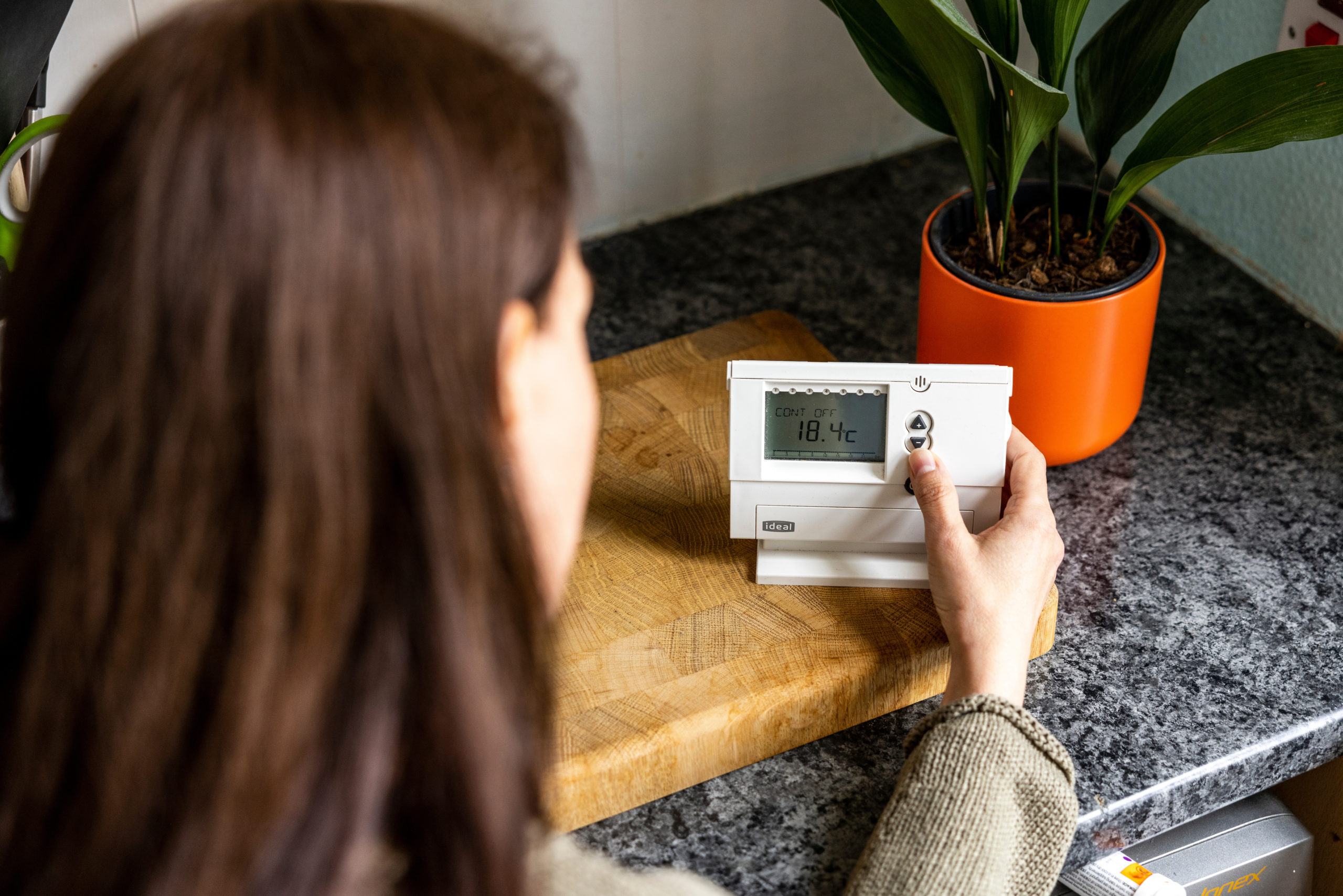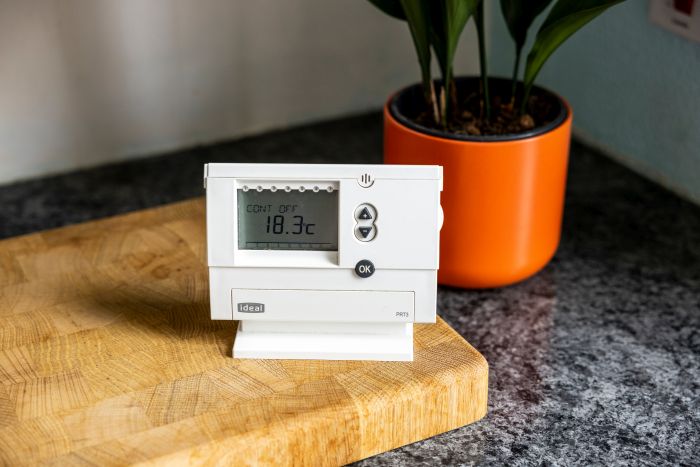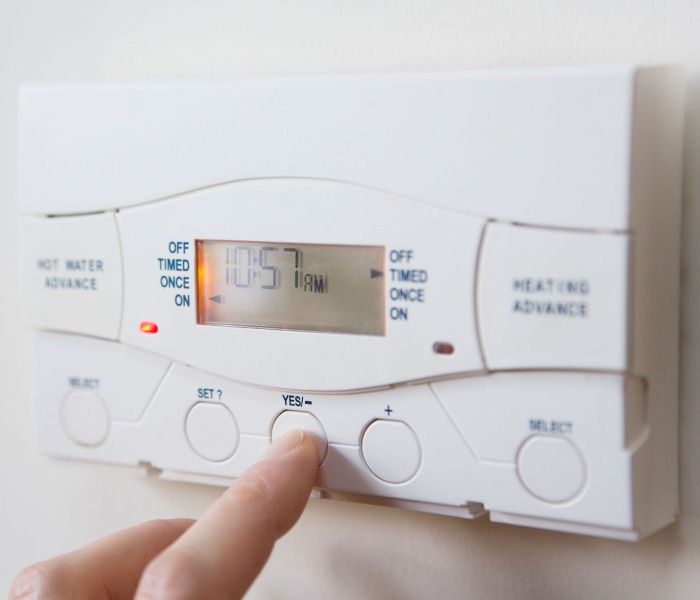Thermostats & Programmers

Thermostats and programmers give us control over our heating. Together, they let us decide how warm our home gets at different times of the day and night.
On this page:
Room thermostat
A room thermostat controls how warm your home gets. You can think of it like the temperature control on an oven. It turns the boiler on or off to maintain the temperature that you’ve set.

The room thermostat helps us save money by making sure our home is only as warm as we need it to be. If we’re warm enough at 21 degrees, we don’t need our home to reach 23 degrees. The extra heat isn’t worth the extra cost.
During the winter, a good indoor temperature is 18-21 degrees. Try setting the temperature as low as you can, but not so low that you’re uncomfortable. For every degree you turn down, you save around 10% on your heating bill.
It’s a common myth that the higher you set your thermostat, the quicker your home will heat up. Unfortunately, whether you set your thermostat to 21 or 29, your home will reach 21 in the same amount of time. The boiler isn’t an athlete that can be trained to run faster; it will get there at its own, steady pace. This means it’s smart to set the thermostat to the actual temperature you want your home to be.
Programmer
Your programmer is the main controller for your boiler.
Programmers come in all shapes and sizes, but their job is always the same. They tell the boiler when to turn on and off.

You can use your programmer as a simple on/off switch. When you select ‘on’, the heating comes on. When you select ‘off’, the heating turns off.
However, programmers really come into their own when you set them to turn your heating on and off automatically, at different times of the day. This is sometimes called a ‘heating schedule’.
Everyone’s routines are different, so everyone’s heating needs will also be different. You can set your programmer to match your routine.
Heating schedules
Heating schedules help us save money on our energy bills. They are all about timing the heating so that it only stays on for as long as we need it.
- If you get up at 07:00, you might set your heating to come on at 06:30. This means your home is warm for when you get out of bed.
- If you are heading out to work at 08:30, you can set your heating to switch off at 08:00. If you’re going to be out all day, there’s no need to heat an empty home.
- If you’re coming home at 18:00, set the heating to come on for 17:30. This means your home will be warm for when you get back.
How to set your programmer
There are many different kinds of programmer out there. It’s worth checking the manufacturer’s website to see if there are instructions for how to use your particular model.
You could also try searching the model of your programmer on YouTube. Both companies and householders often upload tutorials for specific models.
How do the programmer and the room thermostat work together?
By setting the programmer, you’re deciding what times of day you want the heating on.
By setting the thermostat, you’re deciding how warm you want your home to be.
By setting both together, you’re deciding you want your home to be this warm between these hours.
During the times you’ve set your heating to be on, the thermostat will be making sure your home stays at the temperature you’ve set.
Let’s say you’ve set the heating to be on from 06:30 until 08:30. You’ve also set the thermostat to 20 degrees.
- At 06:30, the boiler will come on and start sending hot water to your radiators
- Your home will start to heat up
- Around 07:00, the temperature in your home might reach 21 degrees
- The thermostat will sense that the temperature is higher than 20 degrees
- The thermostat will tell the boiler to switch off
- Your home will start to cool down
- If the temperature in your home drops below 20 degrees, the thermostat will tell the boiler to turn back on
- The thermostat will keep the temperature at 20 degrees, switching the boiler on and off as needed
- At 08:30, your heating switches off
Useful pages
Is this page useful?